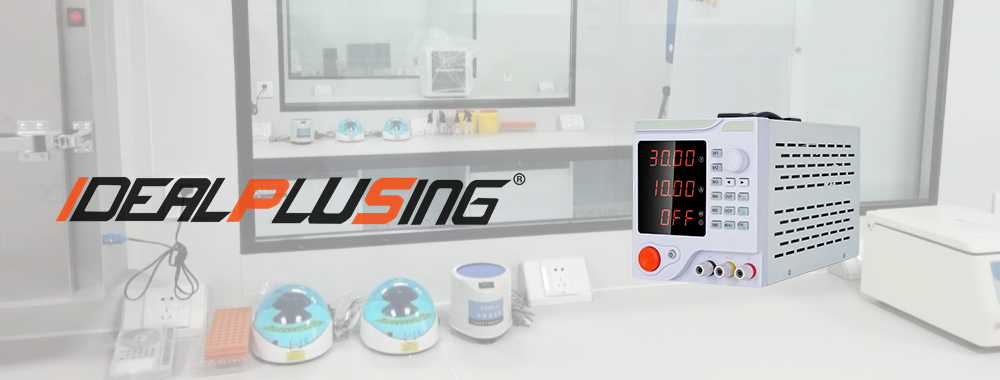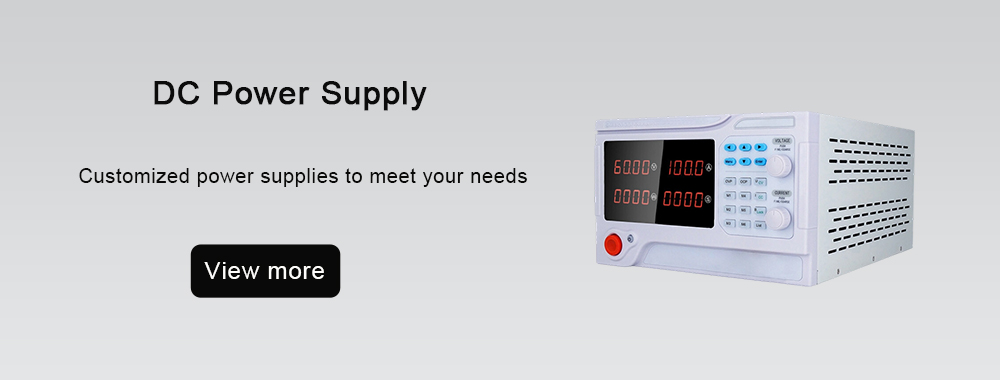A programmable DC power supply is an electronic device whose output voltage and current are controlled via a software interface. Utilizing advanced digital control technology and soft-switching device technology, it receives digital external instructions and outputs a stable DC voltage or current according to specified parameters and procedures. This power supply not only offers a wide voltage and current output range, but also high precision, high stability, and a wealth of protection features, making it an indispensable tool in modern electronic testing and engineering.
So, how do you choose the right programmable power supply? Let's take a look.
Determine the voltage, current, and power requirements.
Voltage
When testing a DUT (components, circuit boards, modules, or finished devices), different voltages are often required.
For example: 1. Different circuit sections on a circuit board may operate at different voltages, simulating the operating environment and providing different voltages during testing.
2. When performing undervoltage, normal voltage, and overvoltage tests on the DUT, different voltages are also required.
3. Companies often develop or manufacture a wide variety of products, and from an equipment investment perspective, they also expect a single power supply to meet as many application requirements as possible.
Current
When testing a DUT (components, circuit boards, modules, or finished devices), different currents are often required.
For example: 1. When performing no-load, 25% load, half-load, full load, and overload tests on the DUT, different currents (power) are required.
2. When performing undervoltage, normal voltage, and overvoltage tests on the DUT, different voltages are also required. Products manufactured are diverse, such as charger R&D or manufacturing companies, whose products vary in voltage and power.
Even companies with a relatively single product need to perform OVP, OCP, and OPP testing.
Based on the above, the voltage, current, and power range requirements for the power supply are clearly defined. By comprehensively considering budget and equipment return on investment, it's easy to select one or more power supplies to meet our testing needs.
Many times, we choose a combination of power supplies to reduce investment and meet our needs, such as: low voltage @ high current + high voltage @ low current + medium voltage @ high power.
Determining Series and Parallel Operation Requirements
If a higher output current than a single power supply requires, multiple power supplies can be connected in parallel, using a bus for master-slave control to ensure overall system performance meets the parameters of a single power supply. Specifications.
When connecting power supplies in parallel, use units of the same model. All control is performed through the master power supply, and the total current is the sum of the output currents of each power supply.
If a higher output voltage than a single power supply requires, DC power supplies can be connected in series. (Multiple power supplies can be connected in series by connecting the positive terminal of one power supply to the negative terminal of another. The remaining positive and negative terminals at the beginning and end represent the positive and negative terminals of the series power supplies.)
Determine communication and control requirements.
In applications, we often need to integrate into the system and control it through an industrial computer. At this time, it is necessary to communicate with the industrial computer. Therefore, you need to choose a power supply with a communication interface. In a system, other devices also have communication requirements. Generally, the communication interfaces of industrial computers are diverse, which also requires that each device integrated into the system can provide different communication interfaces to choose from. The communication interfaces of each device in the system need to be coordinated with the communication interfaces of the industrial computer and the device to achieve good operation effect and low equipment investment. (Programmable DC power supplies can be equipped with RS485/RS232/USB serial ports, etc.)
In some applications, analog control is required. In these cases, the power supply must have an analog control interface. This interface allows setting and controlling DC output voltage and current using weak voltage, current, or resistance signals.
Summary
In summary, if you're looking for a programmable DC power supply, first determine the voltage, current, and power requirements of your power supply, then confirm the power supply's operational requirements, and finally, determine your communication and control requirements. Hopefully, the above information will help you choose the right power supply.
IDEALPLUISNG Power Expert:
We focus on the research and development, sales and services in the fields of DC-DC power modules, AC-DC rectifier modules, DC-AC inverters, AC power supplies, DC power supplies, LED power supplies, chargers, rectifier systems, etc., providing personalized, efficient, reliable and cost-effective power solutions for all walks of life.
Thank you for considering our services.







